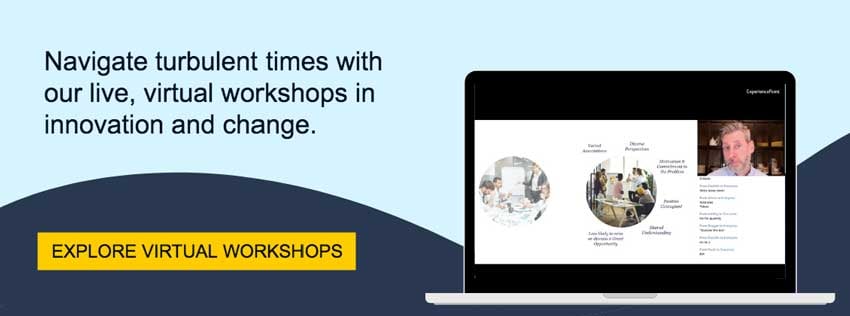In last week’s blog, we focused on how the human-centered design method and its techniques can help anyone accelerate and enhance their job-seeking journey. This week, we shift a similar focus to employers, and explore how human-centered design can improve the hiring process and point the ideal candidates in the direction of your company.
It goes without saying that an organization or company cannot be its best without recruiting the best people. In today’s expanding job market, doing so successfully is no easy feat. A recent paper published by Mercer reminds that the current global shift towards remote work has “remove[d] the physical boundaries that previously limited the talent pool and enable[d] hiring across cities, states, countries and continents.”
With a much wider pool of talent now being exposed to the job market, organizations have both a unique opportunity (to build an even stronger team with a global range of talent) and a larger responsibility (to draw the ideal candidates from that vast pool to their doorstep).
What’s challenging however is that companies, propelled by a natural sense of pride in their organization, assume that any candidate would feel lucky to work for them. There’s nothing inherently wrong with that attitude, however it can lead the recruiter or company to forget that in seeking top talent they must take extra steps to incentivize that interest.
That considered, if we approach the recruiting process as we would any human-centered design project — focusing firstly on the individual and their needs — we are more likely to reap the same results we’ve achieved in building successful products and services and draw the ideal candidates to our door.
We Want You!
In order to attract and retain new talent, it’s important to first empathize with them. What is it that you think they’ll want or need, especially in the context of our new realities? Yes, a competitive salary and benefits are important, but when you’re looking to retain top talent, it’s important that you take a moment to think beyond those typical incentives.
When writing an ad for the position that you’re hiring for, take a human-centered approach by putting yourself in the shoes of the job seeker who’ll be reading your post for the first time. Don’t simply focus on what you’re looking for in an employer. Instead talk about what you’re offering.
In brainstorming the ad’s content with your team, ask such questions as: What do you imagine they’d most like to know? What are your unwritten rules that don’t appear in the manual? What would the ideal candidate for this position likely ask us in an interview setting?
When you’ve come up with some solid responses to these questions, don’t just say them in your job posting, show them. Include links to videos of the office in your ad as well as interviews with employees, and social media threads with photos showing what life is like inside your company.
If you’re still unsure as to what employers might be looking for in this modern world, take some time to research the most up-to-date metrics in today’s job market. For example, according to a recent survey by Glassdoor, 89% of job seekers said they would prefer to work for a company with a clear mission and purpose. Further, in a world where the customer is more likely to trust a user review than the words of a company, today’s potential employees are likely to seek out reviews of your company culture online.
Use some of these human-centric steers to inform your post: Have your company’s mission upfront and center on the ad and include a clear link to company reviews within the post. If you haven’t yet sought out reviews of your company, this may be the opportune time to tend to your brand:
The Importance of Online Reviews
In reshaping and reframing your company’s job posts as a means to attract top talent, it is important that you become acquainted with how the world perceives your company culture. Stepping outside your own bias and getting a hard look at what current and past employees have to say about your company is an important step in empathizing with both current and prospective employers.
If you do find some negative feedback, take those reviews to heart. If 75 percent of employees say your organization lacks training, or leadership, or an effective set up for remote work, it might be time to make some changes. Actively finding solutions for those gaps will be a significant step towards building a company culture that any job seeker would be compelled to be a part of, and in ultimately building the strongest and most capable team possible.
